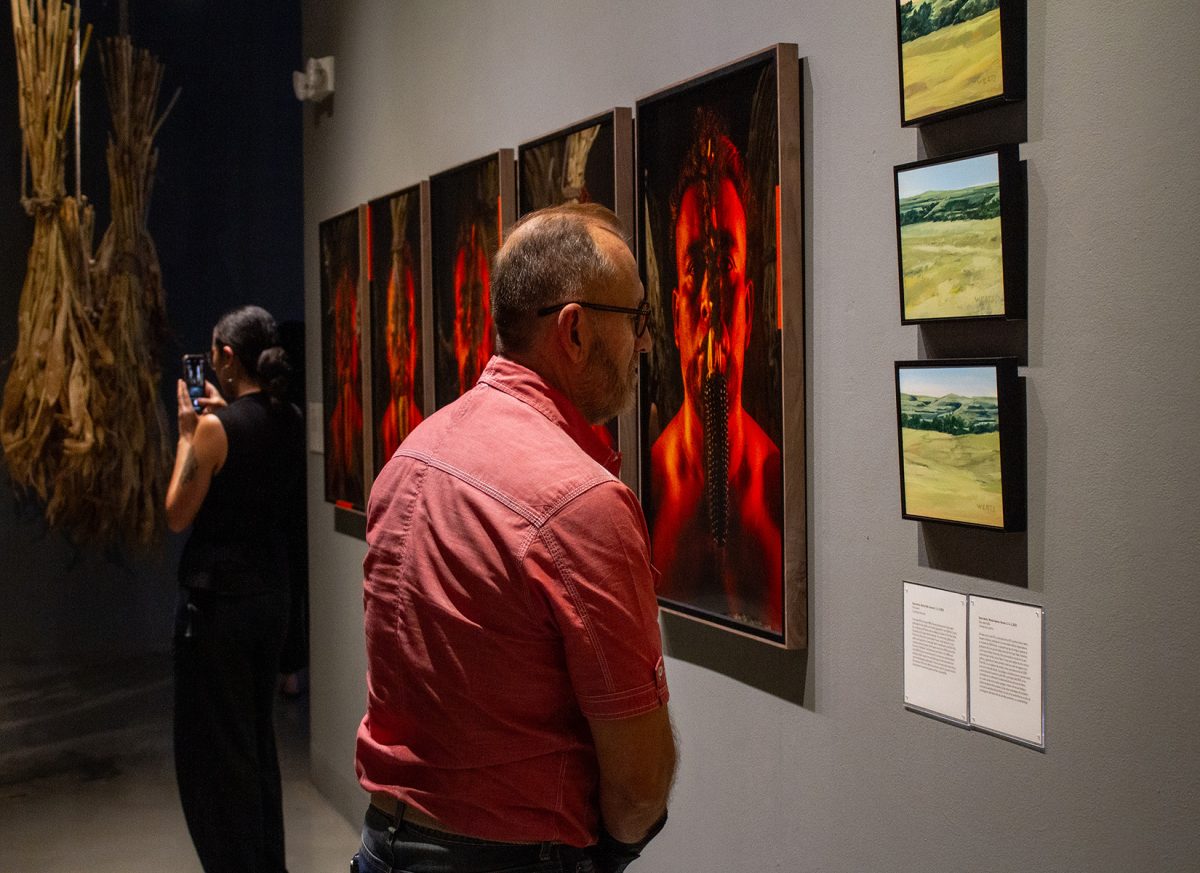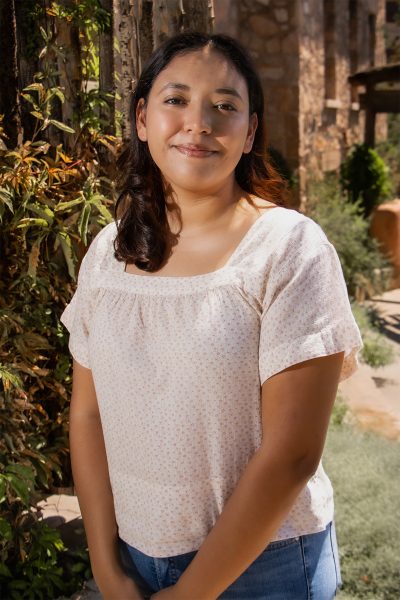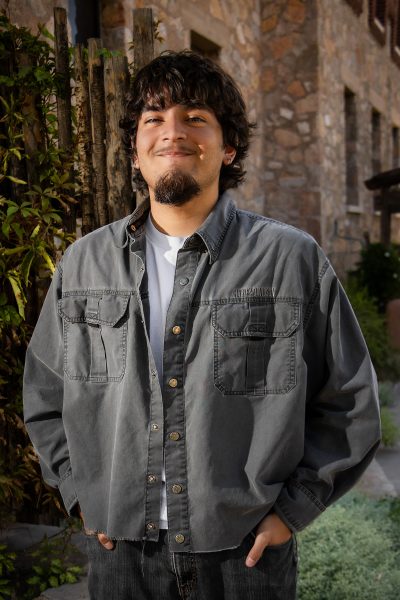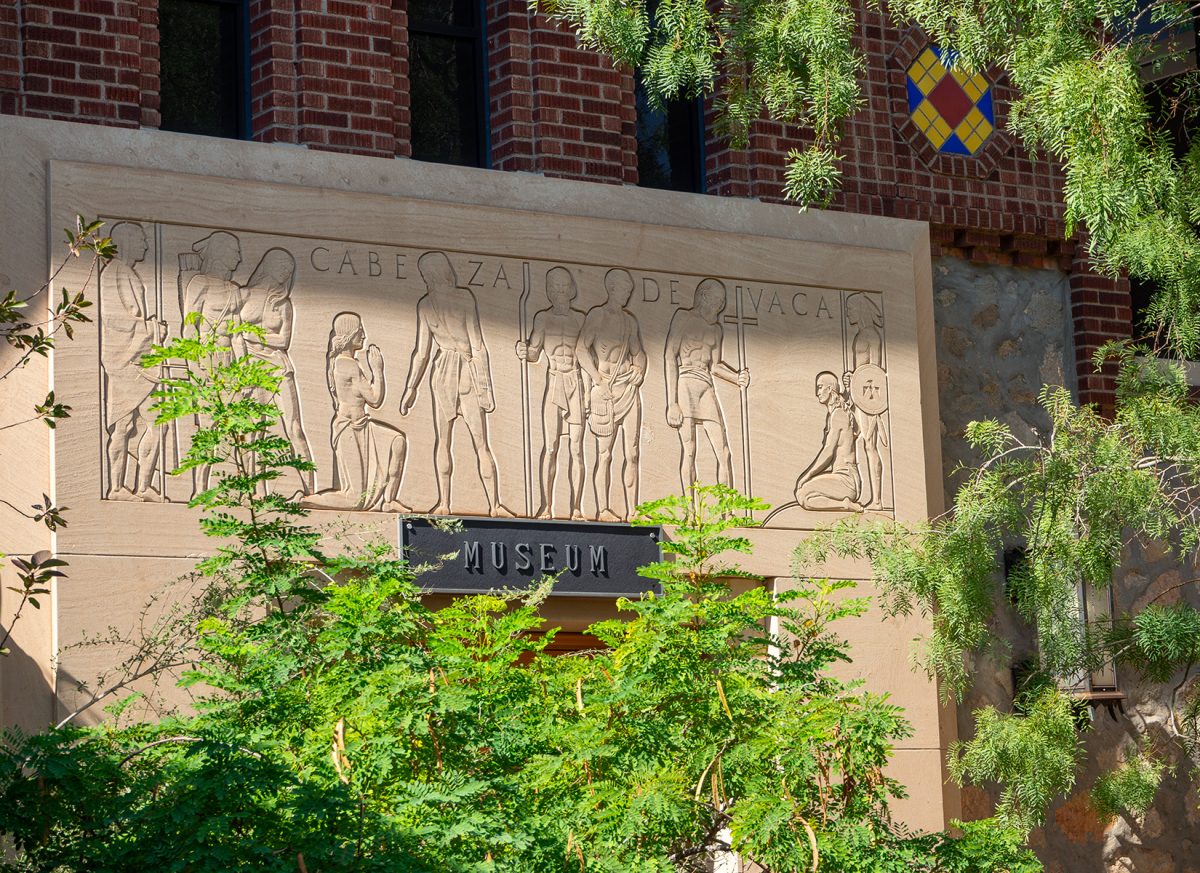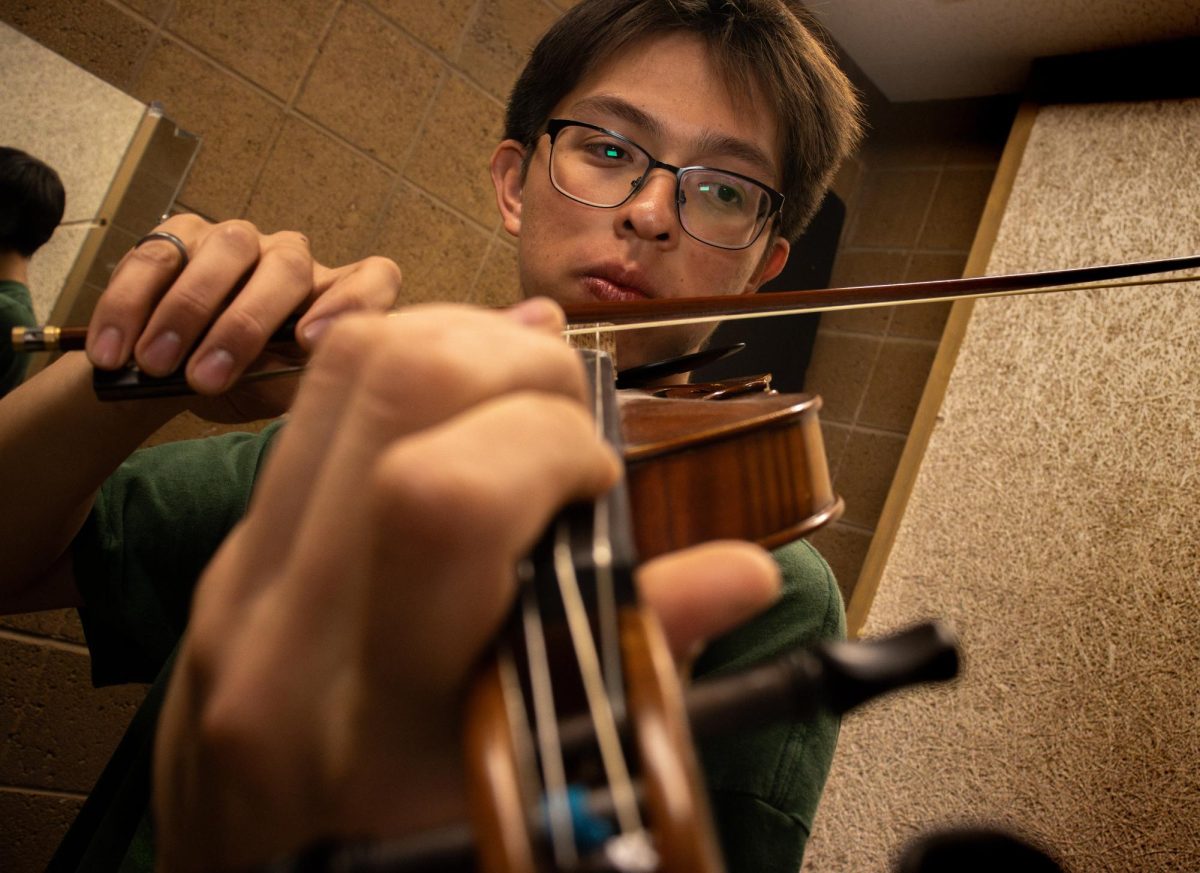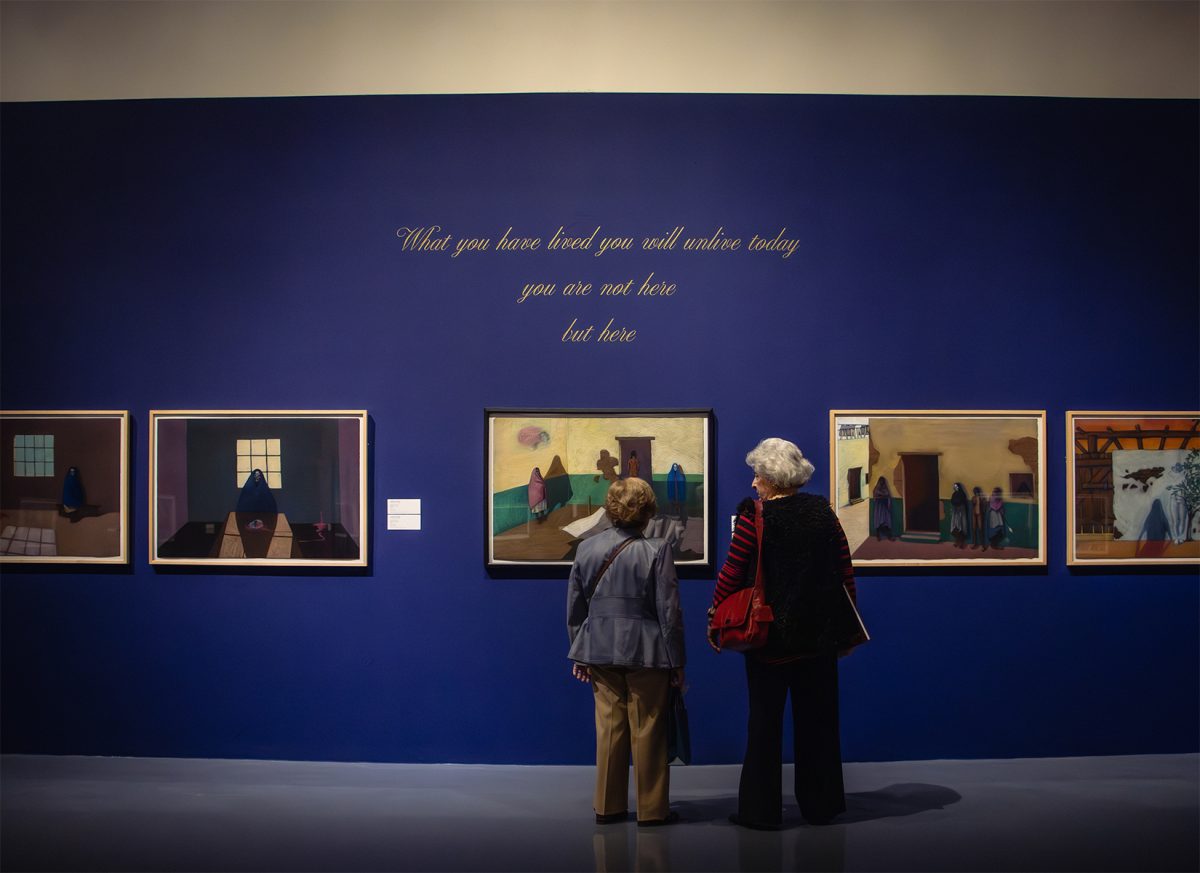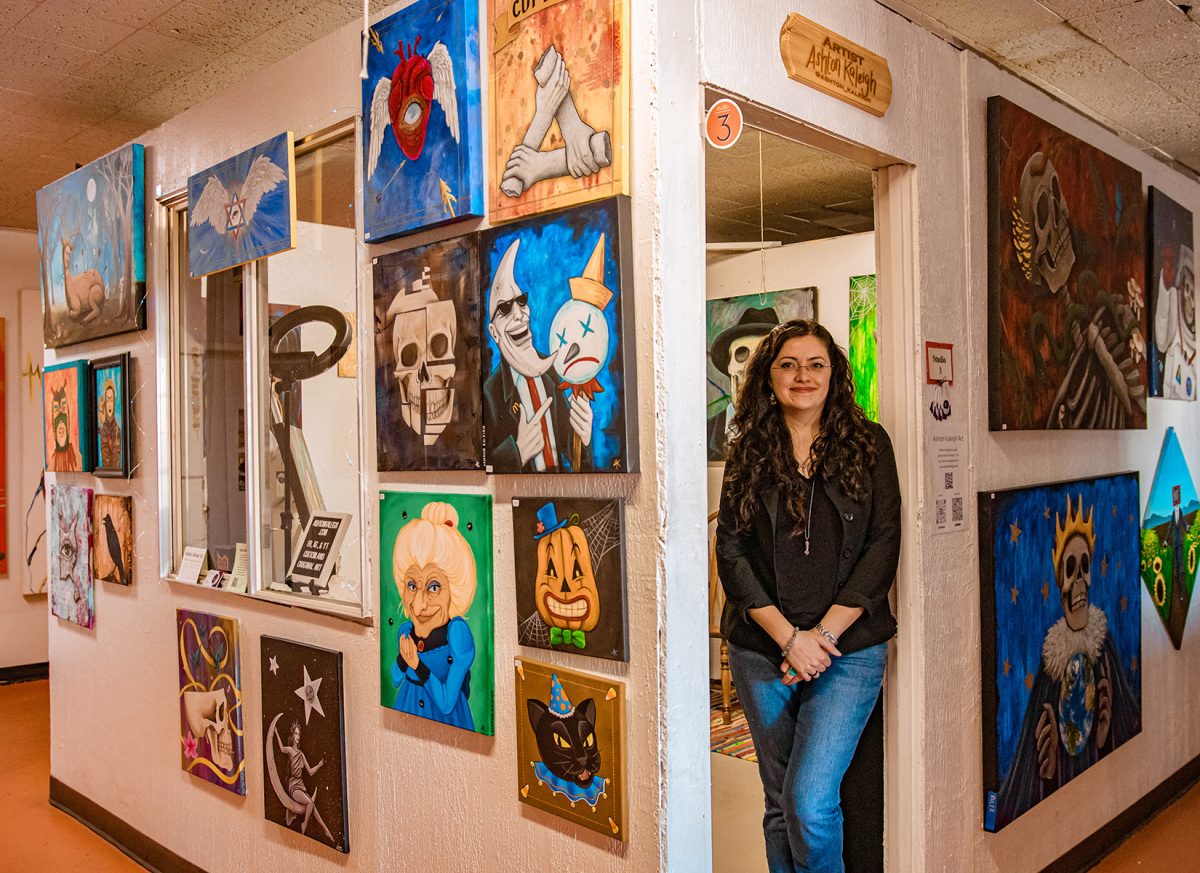The newest exhibit Mud + Corn + Stone + Blue at the UTEP Rubin Center for the Visual Arts made its debut to visitors at the Rubin center on Aug. 29.
Laura Agusta, Ph.D., is the curator of the exhibit, a project that started ten years ago and is personal to her.
Agusta’s family is from the Great Plains of Kansas. Her mother’s cousin, James Dean Pruner, created art during the 1970s and 1980s amidst an agricultural depression, inspiring her to start curating this exhibition in his honor.
Agusta initially sought to understand artists’ responses to the agricultural crisis. However, after living in Guatemala City and working with contemporary artists born in the 1980s, she noticed connections between the agricultural crisis and the worst years of armed conflict in Central America.
“As I worked with these artists, I began to understand more fully the way in which agriculture and traditional farming methodologies, especially of indigenous communities, were at the heart of that political conflict and were the stakes of that conflict and sparked much of the violence,” said Agusta.
With the understanding she gained from being surrounded by these artists, Agusta was able to connect her own family history to a broader historical context.
“As I was doing this research on my family members’ paintings, I also started thinking about the ways that U.S. agricultural policy was involved in our relationship to the political conflict in Central America.”
The exhibition is unique, as the art is not displayed in a linear way, but rather in what Agusta calls a “time non-line.”
“When you work with artists they often aren’t thinking in a chronological way about their work and so that’s interesting because then it loosens up our relationship to history and it lets us see it through ideas instead of through just what we’ve been told to accept is the history,” Agusta said.
The “time non-line” is also especially important as Agusta shares that these stories have not been shared together through the arts before.
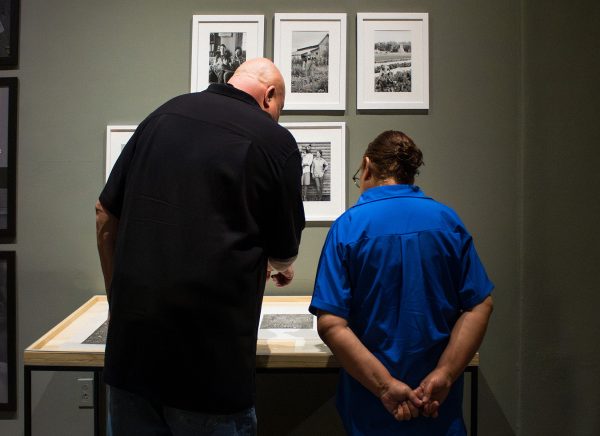
“In this case this is a history between the US and Central America that hasn’t been told in this way before and so I didn’t want to create an exhibition that was very literal and didactic and about defining that history,” said Agusta. “Instead, I wanted artists to have autonomy to get playful with that history and kind of turn it upside down on its head.”
At the opening reception of the art exhibit, UTEP student Clarissa Martinez who is studying print making shared her first impressions of the exhibition and what piece of art stood out the most to her.
“It’s very grand, you can feel, apart from everyone being happy to be here on opening night, you can feel the tension in the artwork,” said Martinez. “I think what caught my eye was the pencil sculpture of the corn. I love that food nurtures us, so we can’t learn without food, and we can learn so much from the earth, so I think that one definitely stands out.”
For Joanna Beltrán Girón, who is an El Salvadorian artist while studying social psychology, this exhibition was impactful and emotional for her.
“I feel affirmed, I feel seen, I feel like that sense of isolation, historic political isolation is disrupted when I see other artists talking about the history of Central America from a very political and historical perspective, so it’s honestly been a great experience,” said Girón.
Mud + Corn + Stone + Blue will have a nine month long run ending April 12, 2025. Afterwards the exhibit will travel to three different museums around the country.
Throughout its run, Agusta shared that the Rubin Center will be bringing in seven different artists whose art is displayed in the exhibit to do workshops and tours of the show. This includes El Paso printmaker Aaron Venegas.
The Rubin Center’s gallery hours are from 10 a.m. to 5 p.m. Tuesday, Wednesday and Friday; 10 a.m. to 7 p.m. Thursdays; and 11 a.m. to 3 p.m. Saturdays.
Ximena Cordero is staff reporter and may be reached at [email protected]


